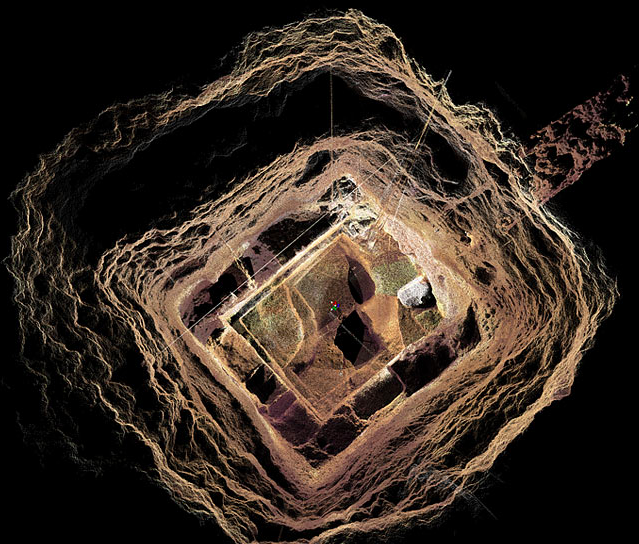Ancient 2,000-Year-Old Tunnel In Mexico Leads to Discovery of 'Royal Tombs'
Tunnel could lead to burial chambers of Teotihuacan leaders

Archaeologists at the ancient city of Teotihuacan in Mexico have discovered a tunnel over two millenia old that leads to three hidden chambers with mysterious burial offerings to the gods.
In a press briefing at the National Museum of Anthropology in Mexico City, Mexican archeologists say that the discovery of three hidden chambers contained thousands of objects, including carved statues, rubber balls, jade from Guatemala, and a wooden box of shells.
Sergio Gomez, director of the excavation project revealed that the three chambers at the end of the tunnel could be royal tombs.
"Because this is one of the most sacred places in all Teotihuacan, we believe that it could have been used for the rulers to… acquire divine endowment allowing them to rule on the surface," Gómez told Latin Times.
The most significant findings include a large arrangement of "offerings" near the entrance to the chambers, at a depth of 59 feet (18 meters) below the Temple of the Plumed Serpent, reported Scientific American. The finding suggests that the burial site could be a tomb of the city's influential and elite, said Gomez.

They also report finding fragments of skin, which might be human. "These could be funerary offerings but I wonder if they might be remains of a huge feast – a feast that might have been part of a great funerary and sacrificial ceremony, especially considering the large number of rather plain jars," said George Cowgill, a professor at Arizona State University in Tempe who directs a research centre at Teotihuacan.
Archaeologists have never before found any remains believed to belong to Teotihuacan's rulers, reported Fox News. New discoveries will help scientists to learn more about the leadership structure of the city.
Teotihuacan, which means "abode of the gods", dominates central Mexico. At the height of the civilization, between 100 BCE and AD 750, it is believed to have been home to more than 100,000 people.
Despite Teotihuacan serving as one of Mexico's most visited sites, the ruins have been shrouded in mystery why the entire civilisation was abandoned before the rise of the Aztecs in the 14th century. This is mainly due to a lack of written records from it's 2,000-year-old inhabitants.
© Copyright IBTimes 2025. All rights reserved.






















